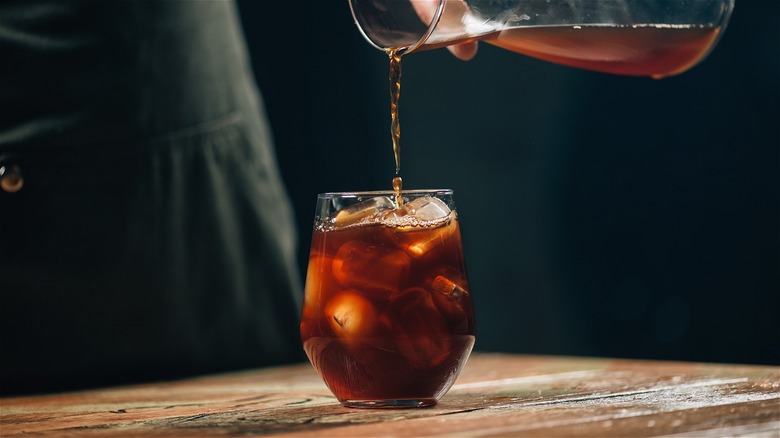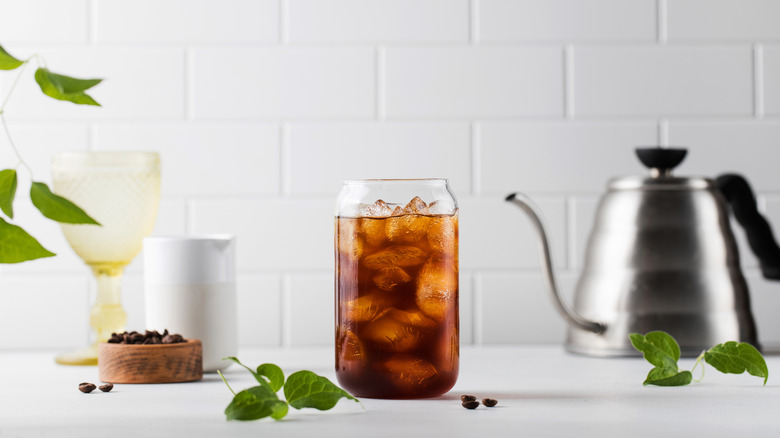The Water Mistake Almost Everyone Makes When Steeping Cold Brew
Whether you're an iced coffee fiend year-round, or just trying to get a caffeine buzz without boiling over during a heatwave, it's important to know how to make cold brew at home. It's not only easy, but much more affordable (and often tastier) than stopping off at a coffee shop each morning. Nevertheless, some folks think the ordeal of making your own cold brew is too fussy, and spend way more time than they should worrying about the details. One of the main ones is what temperature of water to use.
Do you need to add ice to ensure only the coldest of water touches your beans? Will you spoil the batch if it's slightly above room temperature? The answer is no. The cold part of cold brew has far less to do with the first batch of water that's added on, and more to do with the steeping and processing method. You can start a cold brew with just about any standard coffee brewing temperature, which ranges from 195º-205°Fahrenheit, or much colder. Just don't go hotter, or you'll burn the beans and end up with a bitter, ashy beverage.
Cold brew is all about time
A cold brew is defined by the temperature at which the actual processing takes place. Cold brew doesn't require continuous heat or pressure in order to extract flavor, unlike traditional hot coffee or espresso. Instead, it's more similar to steeping tea leaves when making iced tea.
If you give the water and coffee grounds enough time to mingle (think 18-24 hours), the result will be a rich cold brew. Not only will the starting temperature of the water have a pretty minimal impact on the quality of the brew, but it can also actually accelerate the extraction process for those short on time. If you only have something like eight hours to let the mixture steep, for instance, as long as you allow the coffee to come down to room temperature after the initial pour and mixing, you'll have a pretty solid cold brew.
For those in the experimental barista phase, note that varying initial temperatures will pull out different flavors in the coffee beans; coffee brewing, regardless of the chosen method, is all about chemistry. Start out with piping hot lukewarm, or even ice-cold water with cold brew, then use it as a jumping-off point to explore the many flavor facets of coffee beans.

